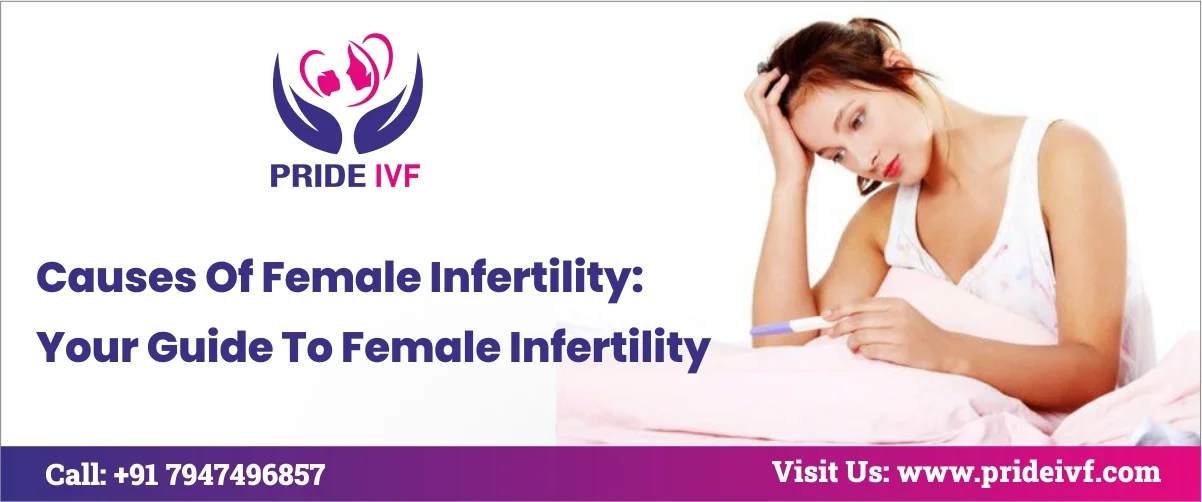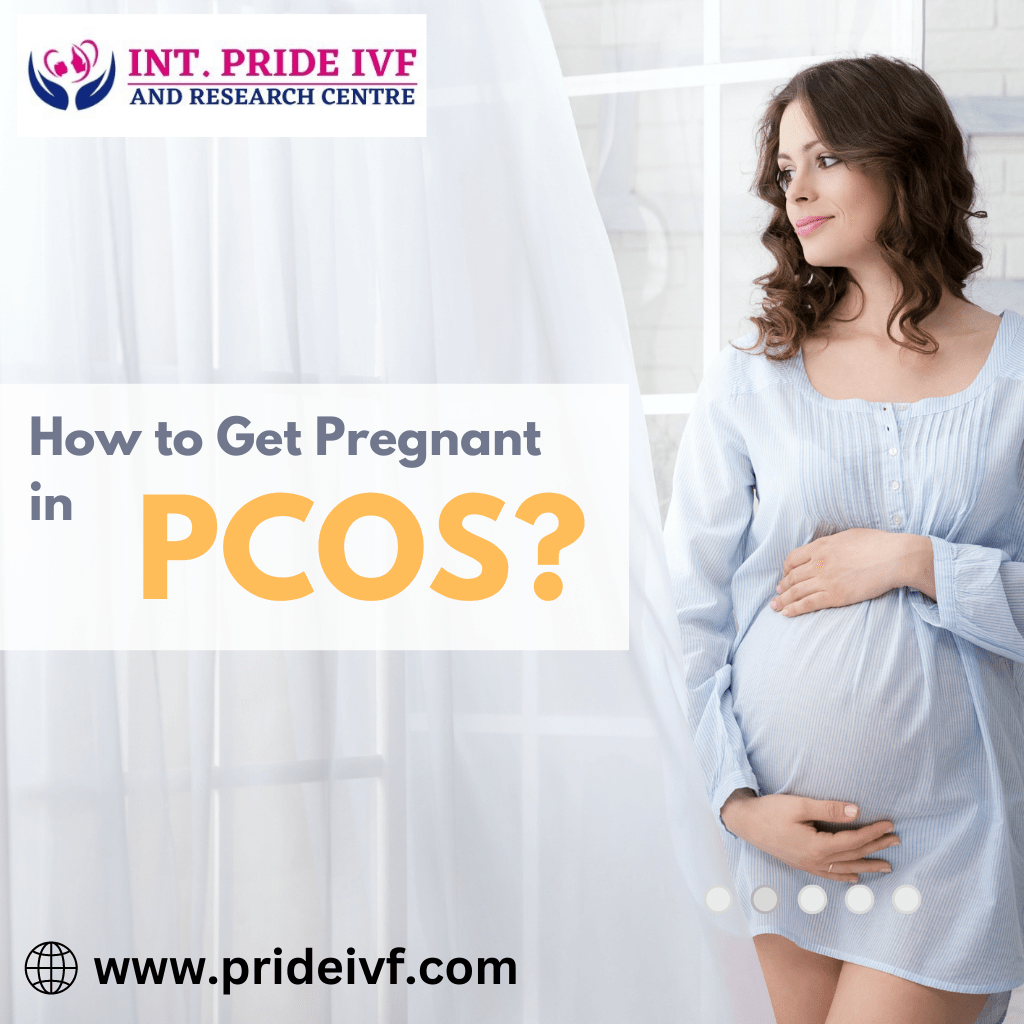Millions of women worldwide struggle with the difficult and emotionally taxing issue of female infertility. A woman is considered infertile when after a year of routine, unprotected sexual activity, she is unable to conceive. This topic is very important since it may significantly affect a woman’s relationships, as well as her physical and mental health.
In this blog by International Pride IVF Centre in Delhi, We shall explore the realm of female infertility with the goal of illuminating the frequent causes of this problem. We’ll also look into possible treatments and solutions that could be given to the individuals trying to become parents. Finding effective remedies and realizing the desire to establish a family begin with understanding the causes of female infertility.




Female Reproductive System
There are crucial elements in the female reproductive organs that are necessary for fertility. The menstrual cycle results in the release of eggs from the ovaries, which are almond-shaped structures in the pelvis. By catching and directing sperm towards the egg, fallopian tubes, which attach to the ovaries, make it easier for fertilization to occur.
Further down is the uterus, or womb, which offers a supportive environment for a fertilized egg to grow into a fetus during pregnancy. The cervix, located at the base of the uterus, serves as a gateway by creating mucus with varying viscosities during the menstrual cycle, which affects sperm access. When examining the causes of female infertility, it is essential to comprehend these functions since disturbances might result in reproductive problems. The delicate balance of the reproductive system can be upset by issues such as hormone imbalances, structural problems, or infections, which may result in female infertility.
Causes Of Female Infertility
Now let’s explore the main reasons for female infertility.
Female Fertility and Age
When examining the reasons for female infertility, it is essential to recognise the influence that age has on female fertility. A woman’s fertility is typically maximum in her early 20s and begins to decline after that. Although there are few tips for getting pregnant at 30-35 which one could follow.
The aging of the ovaries is the main cause of this decrease. Women have a limited amount of eggs at birth, and as they get older, both the number and quality of the eggs decline. This may make it harder to conceive naturally.
In addition, women’s health conditions may worsen as they age and may be a factor in infertility. So, a significant contributing factor to female infertility is age-related reproductive decrease, which emphasizes the significance of appropriate family planning and obtaining medical help when necessary.
Hormone Imbalance
Female infertility is significantly influenced by hormonal abnormalities, which include illnesses like thyroid disease and polycystic ovary syndrome (PCOS).
Ovarian cysts and irregular menstrual periods are both caused by PCOS’s high androgen levels, which interfere with the body’s natural ovulation process. It is difficult to get pregnant because of these disturbances. For women with PCOS, reproductive results can be improved by hormone-regulatory drugs and fertility procedures including ovulation induction at International Pride IVF Centre.
Fertility can also be impacted by thyroid conditions like hypothyroidism or hyperthyroidism. Hormone production and the menstrual cycle might be affected by an unhealthy thyroid. Typically, thyroid level stabilization is achieved with medication, which might increase fertility.
Women who want to start a family have hope by controlling the causes of infertility by understanding and treating these hormonal abnormalities.
Structural Problems
One of the main causes of female infertility might be structural issues with the female reproductive system. For example, blocked fallopian tubes can prevent both sperm and eggs from passing, virtually preventing fertilization. Tube obstructions are frequently brought by either pelvic inflammatory disease (PID) or previous operations.
Obstacles to implantation and pregnancy include fibroids and the septum, a ring of tissues in the uterus. Fortunately, cutting-edge medical procedures at International Pride IVF Centre, like hysteroscopy and laparoscopy can aid in the identification and treatment of these structural problems. Female infertility treatment options might range from surgical repair to in vitro fertilization (IVF), which goes beyond structural barriers, based on the severity of the condition.
When determining the reasons for female infertility, it is essential to identify and treat anatomical issues with the female reproductive structure since prompt treatment can significantly increase the likelihood of pregnancy.
Fibroid And Endometriosis
Female infertility is frequently caused by endometriosis and uterine fibroids, which have a serious effect on women’s reproductive health.
When uterine lining-like tissue develops outside of the uterus, endometriosis results. Pelvic discomfort, protracted monthly bleeding, and scarring are all side effects of this illness that might reduce fertility. Laparoscopic surgery is frequently used for diagnosis, and medicine, surgery, or assisted fertility methods may be used for treatment.
Noncancerous growths in the uterus are known as uterine fibroids. They may alter the uterine cavity, impede the fallopian tubes, or impede embryo implantation, depending upon their size and position. Heavy periods, pelvic discomfort, and frequent urination are symptoms. Options for treatment include monitoring, surgical removal, and embolisation.
Pelvic Inflammatory Disease (PID) With Infections
Infections that are transmitted sexually (STIs) can have a serious impact on female fertility. STIs like chlamydia and gonorrhea can ascend via the reproductive system if they are not treated, leading to Pelvic Inflammatory Disease (PID).
PID causes the fallopian tubes and other tissues to become inflamed and scarred, impeding the sperm and egg’s usual passage. It is essential to screen for STIs early on. Risks can be reduced by employing protection and safe practices to prevent STIs. Antibiotics are used to treat PID, while more severe cases can necessitate surgery.
Lets get started
Unexplained Infertility
Unknown causes of infertility can lead couples to have trouble becoming pregnant, which is a confusing situation. No clear cause of infertility is identified despite thorough female infertility tests, which includes assessments of ovulation, the fallopian tubes, and the quality of sperm.
For couples, this mystery may be emotionally taxing and distressing. However, even in situations where the reason is still unknown, a variety of therapeutic options, such as fertility drugs, intrauterine insemination (IUI), or in vitro fertilization (IVF), can provide hope and raise the odds of a successful pregnancy. Unknown infertility may frequently be treated with medical assistance, even though the path to motherhood may be unknown.
Conclusion
We’ve looked at a variety of causes of female infertility in our thorough reference to the condition, from age-related fertility decrease and hormone imbalances to structural problems and infections. It’s crucial to comprehend these factors.
If you’re having trouble becoming pregnant, know that you’re definitely not alone. The direction and support required to get through these challenges can be found by seeking expert assistance at the International Pride IVF Centre. Many couples can now start families owing to the developments in reproductive medicine. Take that crucial step towards parenting without holding back.




